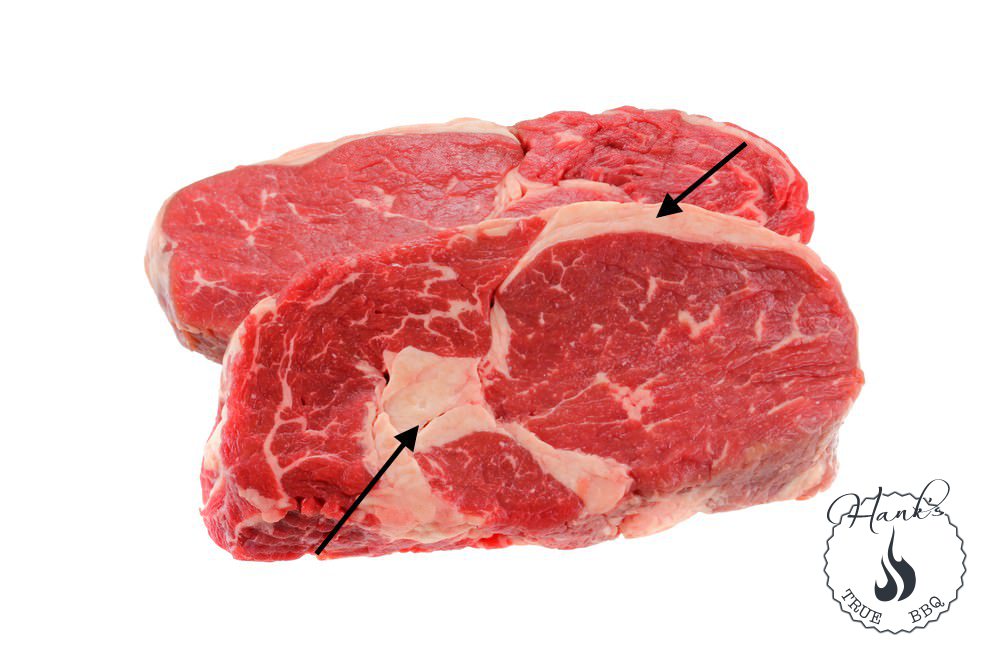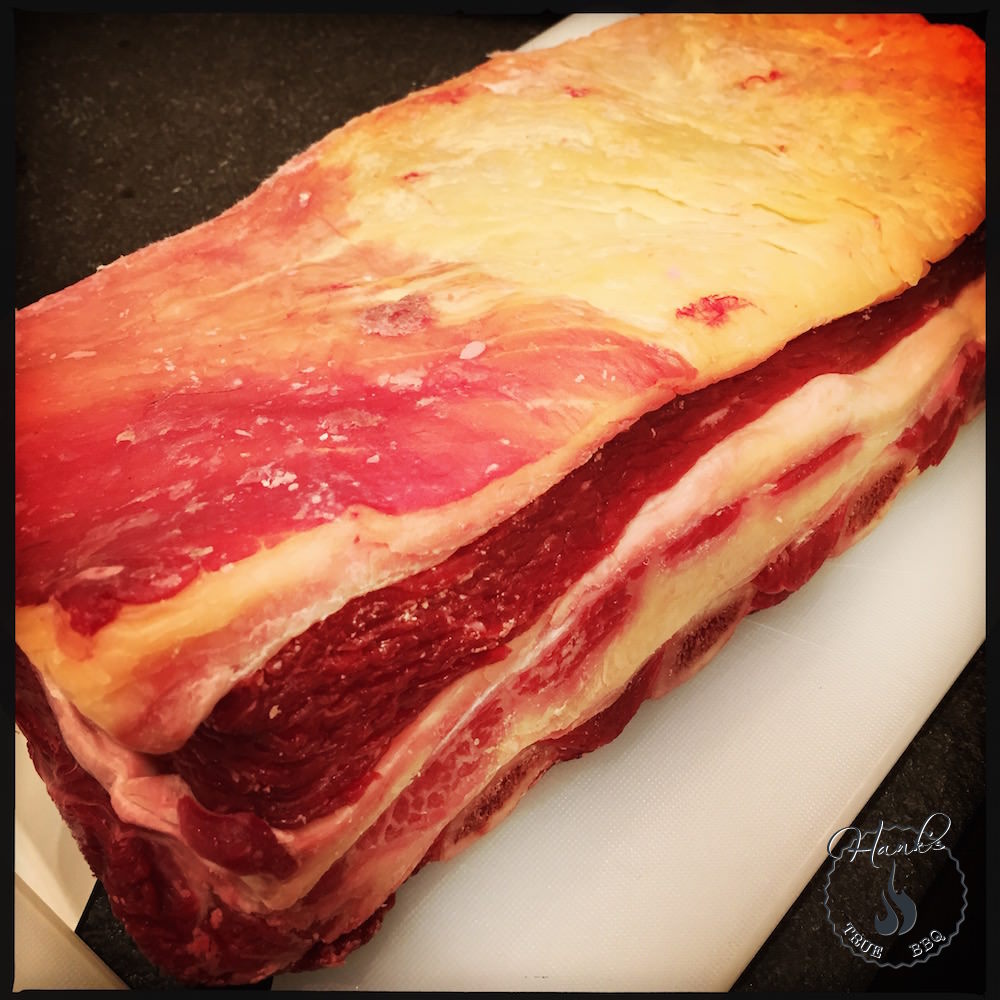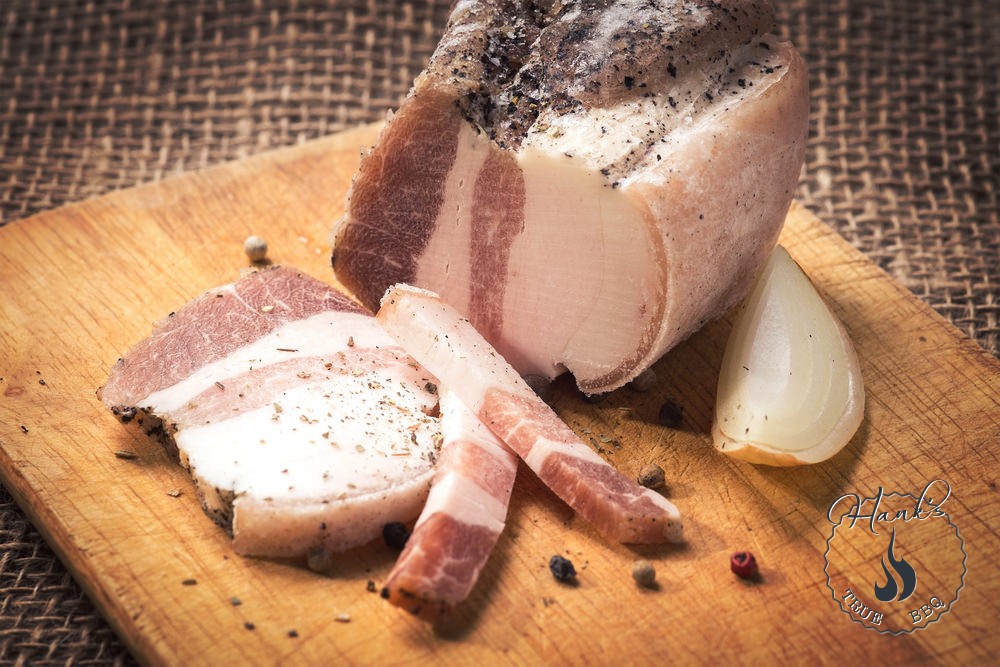Fat and what to remove is interesting, there are many opinions. Some people are meticulous about removing all “white” from the meat. Some people remove just the tendons and membranes, and leave the rest.
How do you know which fat is good and which is bad?
It is actually really simple. There is a rule of thumb you can use when trimming. The fat that is hard at room temperature stays. That is the saturated fat. Press your finger against it to feel the consistency. The fat that is soft or wiggly is removed, tendons and membranes also. Wiggly and/or soft fat will be there after cooking also, and doesn’t contribute any flavor. The hard, saturated fat melts on the other hand, and adds lots of flavor. See the image below where the saturated fat is indicated with arrows.


What about the fat cap, which you see on hams, pork butts or beef rib roast?
It can be used in different ways. I usually cut it down if it is thicker than 0.5 inches. The purpose of this is only to use it as a heat shield when cooking in the oven or on the grill. It doesn’t need to be thicker than that. The rule of thumb is to always place the steak so the fat cap faces the heat source, where it is the hottest. If the heat in your grill comes from below you place the steak with the fat cap down. If the heat comes from above on the other hand (happens in a “reverse flow smoker” for example) you place it with the fat cap up.
Shouldn’t the fat cap always face up?
An old misconception is that the fat cap should face up, as the fat penetrates the meat when it melts. It doesn’t work that way, the fat molecules are way too large to penetrate the meat. Also, meat is around 70% water, and oil and water don’t mix. It does collect in the drip pan on the other hand, so use what’s in your drip pan to make a fabulous sauce.

